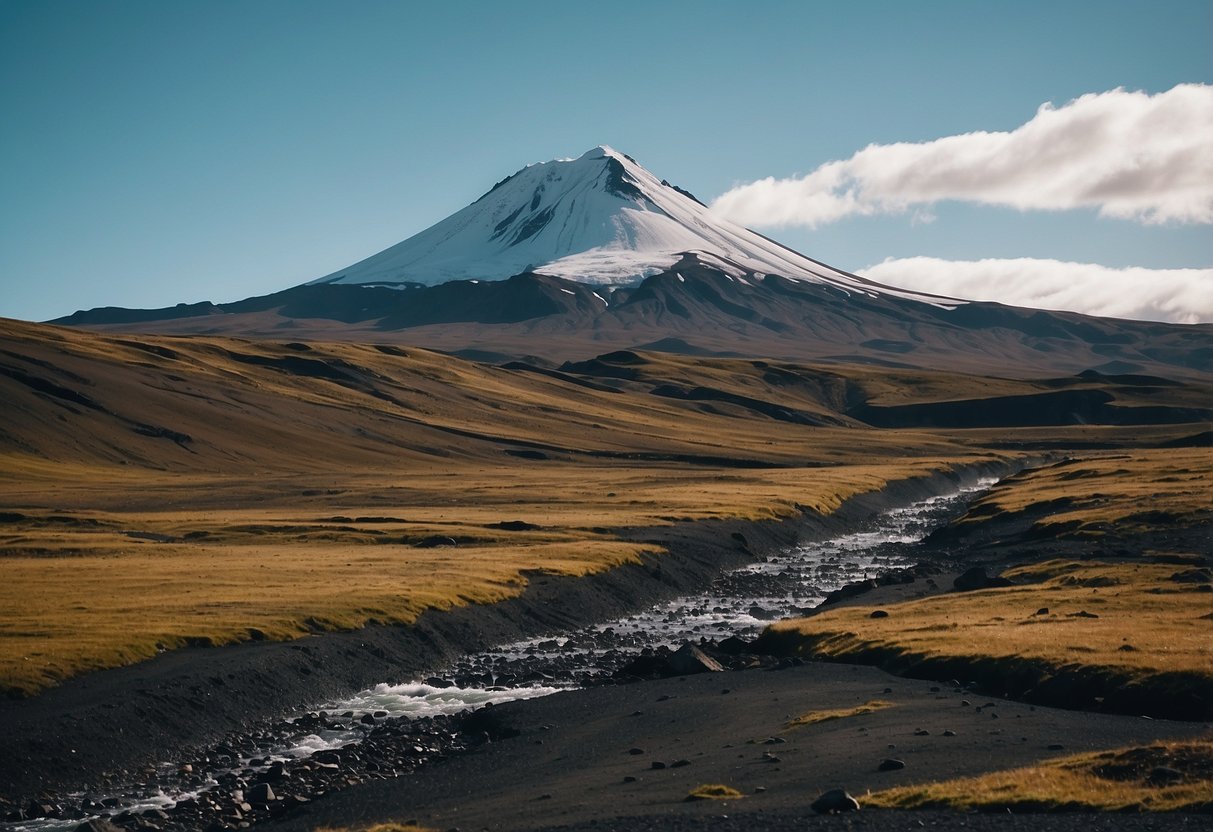
Waterfalls and Beaches: Iceland’s Coastal Wonders
Iceland offers a variety of mesmerizing coastal landscapes, featuring powerful waterfalls and unique black sand beaches. These natural attractions provide visitors with unforgettable experiences.
Skógafoss Waterfall
Skógafoss is one of Iceland’s largest and most famous waterfalls, with a drop of 60 meters and a width of 25 meters. Situated on the Skógá River, the waterfall creates a mist that often produces rainbows on sunny days.
Visitors can climb the 527 steps up the right side of the waterfall to get a panoramic view of the cascades from above. The waterfall’s powerful flow comes from glacial meltwater, making it a stunning sight throughout the year.
Skógafoss is easily accessible from the Ring Road, making it a popular stop for tourists. Those interested in hiking can follow the trail leading up from the waterfall, which passes by numerous other smaller waterfalls on the way to the Þórsmörk valley.
Reynisfjara Black Sand Beach
Reynisfjara is one of Iceland’s most iconic black sand beaches, located near the town of Vík on the southern coast. This beach is famed for its distinctive black pebbles and sand, formed from volcanic activity over centuries.
The beach features striking basalt columns known as Reynisdrangar, which jut out of the sea and add to the dramatic landscape. Caution is advised due to the strong and unpredictable waves, known as sneaker waves, which can be dangerous.
Visitors can explore the nearby Hálsanefshellir cave, carved into the basalt cliffs by ocean erosion. The contrast between the black sands and blue waters creates an otherworldly experience, attracting photographers and nature enthusiasts alike.
Exploring the Golden Circle
Iceland’s Golden Circle offers a unique mix of geological phenomena and natural beauty: Þingvellir National Park, a UNESCO World Heritage Site, and Gullfoss Waterfall stand out as must-see attractions.
Þingvellir National Park
Þingvellir National Park is known for its historical and geological significance. It’s where the North American and Eurasian tectonic plates meet, creating a rift valley that extends through the park. This region is notable for its dramatic landscapes, including fissures, lava fields, and clear blue lakes.
Established in 1930, Þingvellir is not only a natural marvel but also the site of Iceland’s first parliament, Alþingi, which was established in 930 AD. Visitors can walk through this historically rich area and marvel at the geological formations, such as the Almannagjá gorge. Snorkeling and diving in the Silfra fissure provide a unique opportunity to experience the crystal-clear waters directly between two continents.
Þingvellir offers well-maintained hiking trails, which provide ample opportunities for exploration and photography, making it a must-visit for nature and history enthusiasts alike.
Gullfoss Waterfall
Gullfoss Waterfall, also known as the Golden Falls, is one of Iceland’s most iconic natural landmarks. Located in the canyon of the Hvítá river, the waterfall cascades in two stages into a rugged canyon, creating an impressive and powerful sight.
The waterfall’s unique structure and the immense volume of water make it a breathtaking spectacle. The surrounding area offers several vantage points from which visitors can experience the full force and beauty of Gullfoss. In winter, the frozen landscape around Gullfoss adds another layer of beauty to an already stunning location.
The accessibility of Gullfoss, along with its stunning natural beauty, makes it a popular destination for tourists traveling the Golden Circle. Walkways and viewing platforms allow for safe and breathtaking views of this natural wonder, making it a highlight of any trip to Iceland.